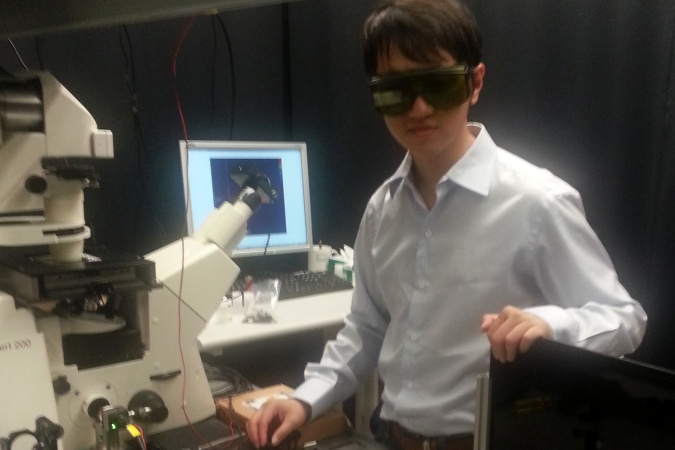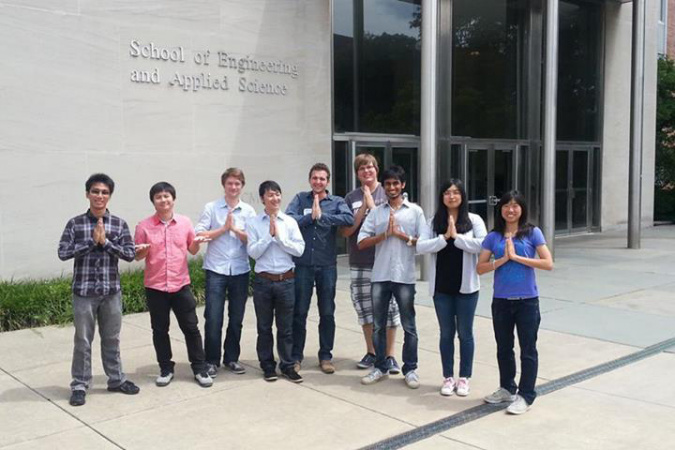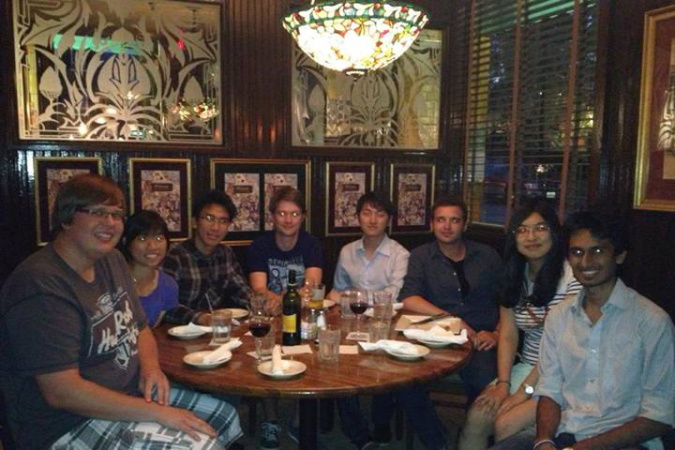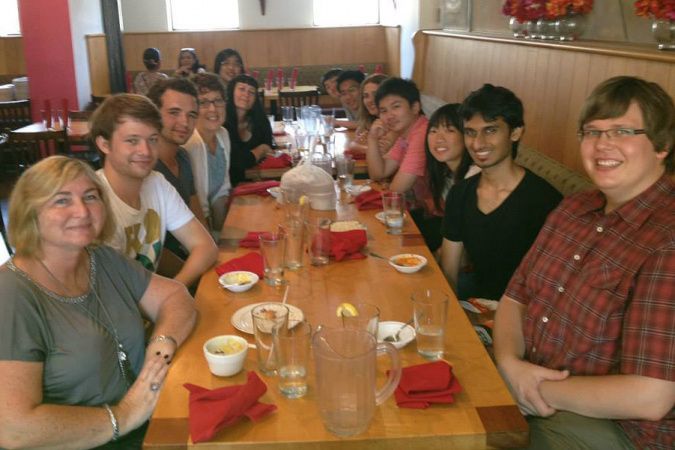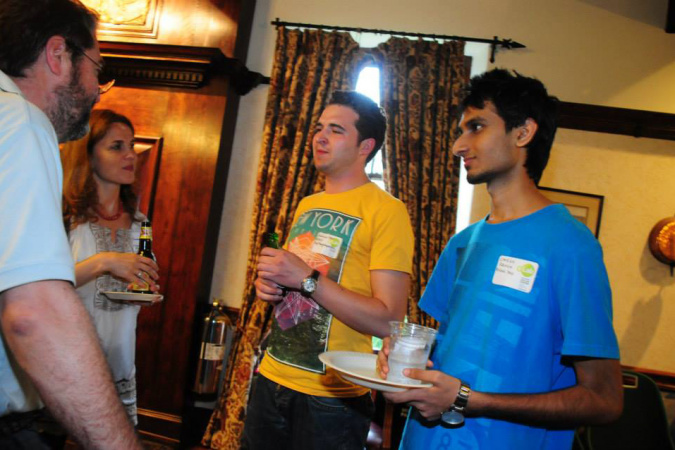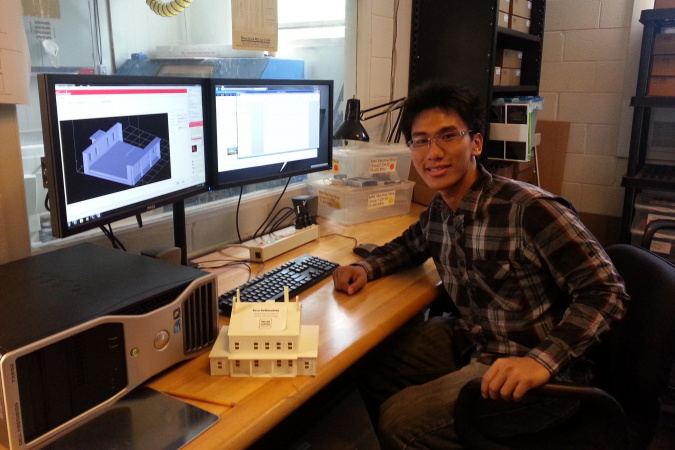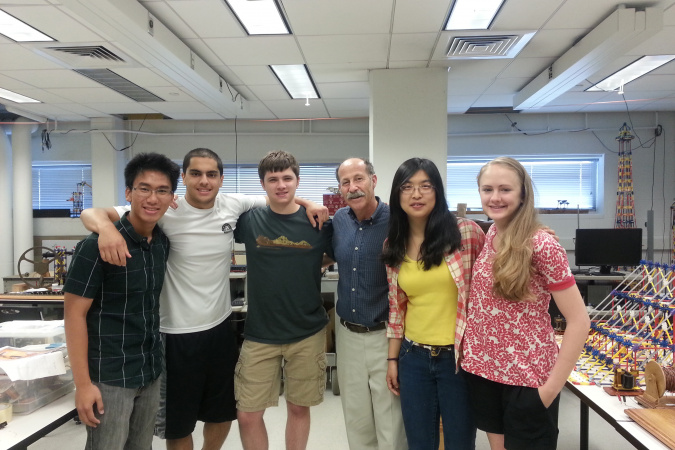Princeton 2013 Student Sharing
CAI Yaxiong Jason (BEng in Mechanical Engineering)
Princeton Advisor: Craig ARNOLD
Department: Mechanical and Aerospace Engineering
I am totally amazed by the extensive research I conducted and talented people I met in Princeton, where my horizon was broadened and my vision inspired. During my internship, I was working on the project “Optical Trap Assisted Nanoimaging” in Prof. Craig Arnold’s group. Basically, the imaging resolution of a conventional optical microscope is limited by diffraction to several hundred nanometers when using visible spectrum light which, prevents one from observing smaller features such as viruses or biomolecules. In my work, we demonstrated a new method, named optical trap assisted nanoimaging, which can observe full-field images smaller than the minimum feature size of conventional optical microscopes. Optical near-field techniques allow one to overcome light diffraction by positioning an optical element in close proximity to the surface of interest. In optical trap assisted nanoimaging, this optical element is a microbead (for example, polystyrene, with a diameter of 4 μm) optically trapped above the substrate in a liquid environment. The microbeads are trapped by a CW Bessel beam that can manipulate the microbead in a controlled way. This enables optical trap assisted nanoimaging to scan a full-field zone of interest instead of several scattered points as previously demonstrated in previous research. This work can open a new door to observe colorful viruses and biomolecules in real time.
The research itself is cool, but what I appreciated more is the considerate people and productive environment I experienced in Prof. Arnold’s group. It was the first time that I conduced laser research, so when I entered the group, I almost knew nothing about it. My advisor and mentors guided me along the way, from initial literature review to actual experimental implementation. The group meeting every week gave us the opportunity to make our work systematic and to communicate with each other. Through the process, I also learned how to conduct research from being helped by my mentors, to being capable of working independently. As a result, I have implemented the experimental setup and successfully resolved lines spaced 500 nm apart using high-speed microscopy with highest resolution of 1000 nm.
Nevertheless, HKUST-Princeton research program is more than just research. It is also an opportunity to build friendships with international characters and experience a different culture. Thanks to a series of activities, happy hours and gatherings provided by the Keller Center every week, we made friends with interns from Germany and eLab students. We also spent our free time together by eating exotic food and enjoying sightseeing.
On the other hand, there are several suggestions that I want to give for following HKUST-Princeton Research Program students. First and foremost, try to communicate with as many people as possible. I believe many of you who participate in this program perhaps want to pursue graduate study in USA. Then this is the exact opportunity for you to explore graduate life and applications tips. You can meet with professors to get a clear idea about their research perspectives, or chat with graduate students for obtaining practical advice. Secondly, make a plan before coming to Princeton. Princeton is a super junction which is very close to New York, Pennsylvania and Atlantic City. During weekends, you will probably want to visit those places, so making a travel plan before coming to Princeton would be awesome.
All in all, my experience at Princeton was memorable and exciting and all the joyousness could not exist without the support of HKUST School of Engineering and Keller Center of Princeton. Many thanks!
LI Xiaoya (BEng in Electronic Engineering)
Princeton Advisor: Michael LITTMAN
Department: Mechanical and Aerospace Engineering
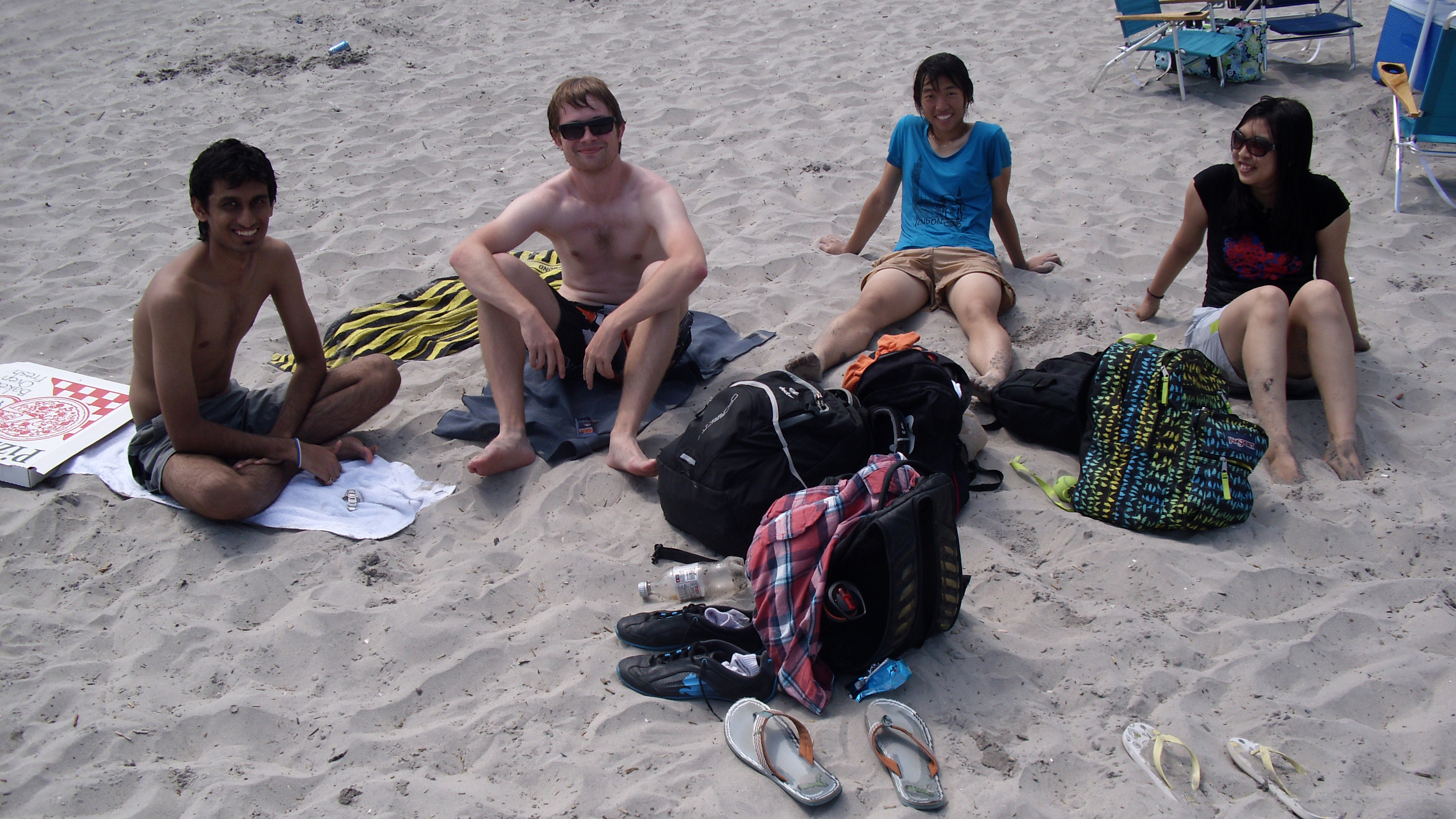
In the summer of 2013, I participated the Princeton Summer Exchange cooperated by Princeton University and Hong Kong University of Science and Technology. The program provides me an opportunity to do a research project under the supervision of a faculty member in Princeton University. As a student from Hong Kong, I completed a 2-month research project in Princeton University under the supervision of Professor Michael Littman in Department of Mechanical and Aerospace Engineering.
During the program, I worked with Prof. Littman on the Joseph Henry Project, in which we did a study on Joseph Henry, a celebrated American scientist who worked in Princeton University during 1832 to 1846, about his research on electromagnetism and radio. My research work this summer mainly focused on the scientific experiments done by Henry around that period. Overall, the study involved plenty of researching historical documents and replicating major experiments. This is helpful for my future development because it taught me an important aspect of how to carry on a research project. In addition, working in a laboratory abroad was a very valuable experience. It enabled me to learn about the difference between research environments in Hong Kong and in America and through this process I could get a better international vision. Working with people from different backgrounds indeed provided me a great chance to learn from others.
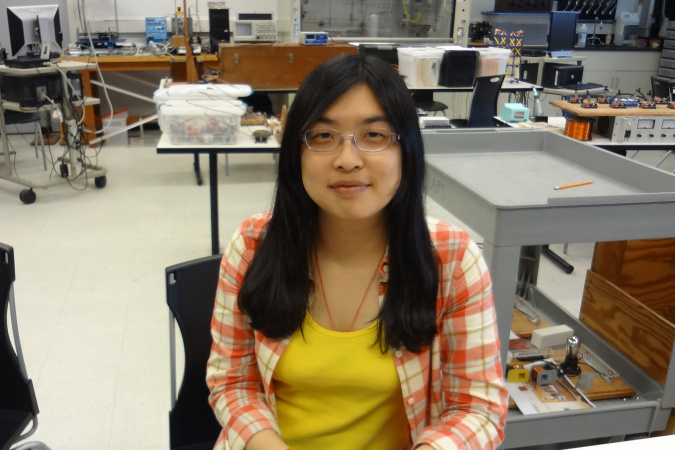
Besides the research work, I also had a great experience making new friends from different countries. The program provided participants many opportunities to socialize with people from different backgrounds in different programs, such as weekly seminars with lunch gathering and happy-hour gatherings every week. These activities provided a great chance to meet new friends from different programs. I also had a wonderful time travelling around with the members in my laboratory and other international students. We took short trips to nearby cities such as Washington D.C. and spent a wonderful time exploring different cities. During the trips I got to see more about the American culture as well as cultures from other international students. Getting engaged with research in Princeton University and making friends from different countries were one of the best memories that I got from this program.
I am very grateful to have gotten this chance to participate in this exchange program. The support from HKUST and the warm welcome and help from Princeton University made me feel at home throughout the entire program. I had a wonderful experience working in the laboratory as well as having fun with new friends. This experience will encourage me to get more involved in cross-cultural activities in the future.
Clarissa Cyrilla PRAWOTO (BEng in Computer Engineering)
Princeton Advisors: YAO Nan and Gerald POIRIER
Department: PRISM - Imaging Analysis Center
I worked at an imaging center (Imaging and Analysis Center - IAC) which was under the Princeton Institute for Science and Technology for Materials (PRISM). I was supervised by Prof. Nan Yao and Gerald Poirier, who were the leading investigators in the laboratory. Working in his lab has enabled me to learn many different imaging techniques, one of them is learning how to operate the imaging devices, such as the Scanning Electron Microscope (SEM), the Transmission Electron Microscope (TEM), the Raman Spectrometer and the Ellipsometer. These devices were utilized for analyzing materials that were studied in various research projects. Moreover, the experience has introduced me to a new interdisciplinary field, material science.
I worked on the projects along with another student from the Chemical Engineering Department at HKUST as a team, since we were both assigned to the same supervisor. The projects that I worked on were about studying the damping properties in abalone shell and Raman spectroscopy of carbon nanofibre. The first project was motivated by the structure and the excellent mechanical properties of abalone shell, which inspired us to compare the vibration damping in the shell and in ceramic. Whereas in the carbon nanofibre project, we used Raman Spectrometer to get Raman shifts that characterize the material and compared the shifts with the existing literature, and we observed some interesting behaviour of the Raman shifts.
As I worked at an imaging center, I met various people from different background fields of study. It is because the imaging center is very useful and crucial in many fields, for instance, in studying elements in geological rocks, in imaging devices for microelectronics, or in developing new materials for biomimetics. As a result, it enabled me to learn wide varieties of subjects as I also worked with people from different backgrounds, from Chemical Engineering, Electrical Engineering, to Mechanical Engineering. Therefore, it gave me an opportunity to learn how to communicate with people from different backgrounds of study and how to communicate ideas in general. Working with people from various fields has enabled me to expand my knowledge in those fields of study as well, because interacting with them made me learn about many things that I have never heard of before in my undergraduate study in Computer Engineering. Furthermore, the topic of my research was a completely new field for me, such that I had to learn to teach myself an unfamiliar field of study in such a short time, which provided me a training for research in the future.
Other than academic exposure, I also experienced an exposure to the international environment, as the program consisted of a community of international students: 3 students from Germany and 6 students from Hong Kong. Since I moved to a new place, I had to learn to adapt to the environment, which means adjusting to a new culture, new people, new systems, etc. In communicating with others, we had to overcome cultural and language barriers, especially because for most of us, English is not our first language. We also met the diverse Princeton students from the activities organized by the school, and from those activities, I learnt how to build connections with other people. I made a lot of new friends from different parts of the world during the program, and by communicating with them, I believe it could broaden my knowledge and teach me to view things from different perspectives.
In conclusion, this program has enabled me to experience a multicultural working environment that made me learn a lot just by interacting with the people in the program. I believe I have also made a good use of my summer, by participating in a research project in a world-renowned research and educational institute, I have broadened my views in both academics and cultural aspects. The summer exchange program has let me experience an unfamiliar field of study that I have never thought of before, so that I gained more breadth in terms of knowledge. I have also met new people, polished my communication skills, and experienced how full time research is like. I believe that this is a very rewarding experience and I hope that this program will continue in the future.
Lokesh Narendra LOHIYA (BEng in Chemical Engineering)
Princeton Advisors: YAO Nan and Gerald POIRIER
Department: PRISM - Imaging Analysis Center
The reaching out activity that I was involved in this summer was the Princeton REACH program. It is a program where a few students from HKUST, who are interested in making research their life, are given a chance to experience working in a top-notch research laboratory. Along with the research, this program gives students the opportunity to broaden their cultural horizons as the program is set in the US at Princeton University. The duration of this program was 2 months and it took place in the Princeton Township, the city where the wonderful Princeton University is set up. Being selected to represent my university in this program on such a wonderful platform was a privilege and at the same time life changing.
Princeton was neither my first exchange experience in the US, nor was it my first research experience. It was a mix of both research and exchange, and it was this deadly combination that changed my life forever. I arrived at Princeton with the aim of doing some work that would bolster my chances of going to a graduate school in the US. I left with not just scoring that goal, but celebrating much more.
From the moment I was introduced to my faculty advisor, Dr. Nan Yao, until the final celebratory lunch session with my supervisor, Gerald Poirier, I was made to feel that I belonged. It was this feeling that helped me shed the fear of being an international student and work to the best of my abilities.
Once I got accustomed to the stunning instruments at the Imaging & Analysis Center (my second home at Princeton), I was given freedom to explore their use on ‘Red Abalone Nacre’ samples. Eventually, with the consent of my supervisors, I began working on the ‘Damping effects of Nacre’. I worked with another student from HKUST, and together, we obtained data that suggests that the Abalone shell is definitely a better mechanical dampener than ceramic of similar composition. Conducting a frequency analysis of the vibrations in the samples, we watched when a marble ball in a pendulum setup struck them to prove this. In addition to this project, I did a Raman Spectroscopy analysis of carbon nanofibers. A unique peak intensity switch was observed with different lasers that will be studied further. The results of both these studies were so promising that our advisor gave us the opportunity to ratify them into publication works. This outlandish outcome is beyond any expectations I had before starting and will definitely bolster my career.
In addition, I became really close to our German counterparts in the REACH program. I ended up travelling to New York almost every alternate weekend and even went to Boston and Atlantic city. This made my summer not only productive but also proactive. These trips meant that there was a nice balance in my routine and also helped me become indulged in the local culture.
In addition, the lab that I worked in was very multicultural, and being the imaging center meant that professionals from all fields came to use the facilities of the lab. This meant that I got the amazing opportunity of interacting with so many people, from so many fields and from so many backgrounds. Such an opportunity helped me see firsthand the frontrunners of research in almost every field which helped me not only become more aware but also fascinated with the promise and change these researches could bring about. Through this I realized that we must not only dream big, but also try to work towards achieving these dreams as the world has enough and more scope to turn them into a reality.
In addition to these multicultural interactions, there were several meet-and-greet events organized by the Keller Center at Princeton (the department that took care of their international events). These events were not only attended by the participants of the REACH program, but also by students from Princeton and several other universities that were working there during the summer. The interactions with these people helped me adapt better to the new environment, but at the same time allowed me to understand what it took to be accepted in these top universities for graduate studies. This helped me recognize the exact path that I need to pave in order to fulfill my dreams of going to graduate school. All in all, this experience helped me become more focused in my aims and at the same time more determined to achieve them.
Ezra Yoanes SETIASABDA (BEng in Civil and Environmental Engineering)
Princeton Advisor: Michael LITTMAN
Department: Mechanical and Aerospace Engineering

When I received the email that I would be going to Princeton University, I was both nervous and excited. I am really thankful for the opportunity to be able to come to the States and especially to a top university like Princeton University. In this report, I will share some of my experiences in my 8-week research internship there.
Since I came for academic purposes, I will start with it. I was pretty much anxious of the research that I will conduct for my supervisor, Prof. Michael Littman, who is a physicist from the Mechanical and Aerospace Engineering Department while I am from the Civil and Environmental Engineering Department – the difference between the two departments can be worlds away. Back in early February I had good conversations with Prof. Littman through email and thought of the project I would do. His interest for the summer lay in one of the greatest physicists of all time, Joseph Henry. On campus, his house was registered as National Historical Landmark – a structure that bears significance to America. Thus we decided that this is a common point between his and my interest. I was much relieved but still a little anxious about the project that I would have to conduct.
My nervousness was much alleviated when I met Prof. Littman in person. He is a very open and kind person who has the energy and passion for his students – which is not really common for a professor of his caliber. He told me that I could use the 3D-Printer to make house models and we could also delve into the historical research as well as structural study. He admitted that he is no expert on this but he recommended another faculty, a structural engineer, who might help in our project. I was then ready to kick off the research project here. I started gathering materials from both Mudd Library and also Firestone Library. It was really fun (for a first-timer like me) to come to a manuscript library. After gathering enough information, I started drawing them on my computer, using AutoCAD. Following that, as you can guess, I started to print using the 3D-printer! It was very cool that a machine can produce a 3D body of whatever shape. Though it took some time to have everything done, I was very impressed with the model. Prof Littman asked me to make 3 models; one is to be given to the current occupant of the Joseph Henry House, Princeton University Council of the Humanities, one for him and, to my surprise, one for me! So I got to bring a model of my own work home!
Wrapping up this section, we delved into the history of the house. A question at hand was who the architect was. It was traditionally attributed to Joseph Henry because the Board of Trustees of the College (Princeton University was then called the College of New Jersey) mentioned their acceptance of Professor Henry’s plan. A colleague in the lab once commented that my project had turned into a CSI. I have to admit that it was not easy but I was glad to be able to experience this study! We also had a chance to go to Washington DC for a day for our research project. It was Prof. Littman’s idea that he would bring us there together. We happily obeyed him and I had chance to go to Smithsonian Institute Archives where I found more information on the house. Lastly, I also met a well-known local architect, Jeffery T. Clarke since he renovated the house some 13 years ago – he might have known some information of the house, in which he did.
8 weeks felt very quick indeed. I do think that the environment in Princeton University is conducive – I simply can’t ask for more. I like walking from Spelman to E-Quad every morning, though far, because I simply fell in love with the campus – with the buildings, the plan, everything! The people I met in the lab and workshop are also very welcoming people. I particularly want to mention Chris and Glenn from the MAE Workshop who helped me a lot with printing my model. They helped me a lot – teaching me how to use the machine, helping me to use the software as well as assisting me when troubles came (I had to print the same thing three times before I got it – the first failed because someone took it out and the second failed because of power failure). I am really glad for these people. Frances and Seth, both Princeton University students, are also very friendly and I am happy to meet students from other university like Vardo and Dan.
In addition, I am very much impressed with the service Keller Center and eLab provided us. We had the chance to visit Princeton Plasma Physics Lab, one of the ten national labs in the country. Also, the weekly seminar was very useful as well – I learnt a lot from those seminars. Of course, the provided lunch on every Wednesday was something I savored during my stay as well – somehow free food always tastes good. I would use this chance to say my gratitude for your hard work in accommodating us in Princeton University.
Well, we have to remember that this is summer, right? I did take a few opportunities to travel around. I went to New York, Philadelphia, Washington DC, Jersey City and Boston. At every city, I met my friends – most of them are long-time-no-see friends, ranging from high school friends to my church friends. This makes my stay in Princeton to be more complete and more enjoyable!
YU Ye Fisher (BEng in Electronic Engineering)
Princeton Advisor: Claire GMACHL
Department: Electrical Engineering
This summer, (June 10 – August 10), I participated in the REACH program at Princeton University to be the summer research intern. This program is supported by Keller Center and MIRTHE. I worked in Prof. Gmachl’s group and worked on the quantum cascade laser design.
I learnt a lot from this program and enjoyed my summer here. As an electrical engineering student, having real research experience in Princeton University, one of the most famous universities in the world, is really memorable and unforgettable, especially working on the photonics and solid state device field, which was new to me. Through the project of “High Power Superluminescent Quantum Cascade Devices”, I have a better understanding of quantum cascade laser. This experience also inspired my keen interest in solid state devices. Besides, working with graduate students on his real research project is different from homework projects from the courses in school. The feeling of contribution to the project is great and the more amazing part is, I am learning through working.
Most of the time in this summer, I worked in the lab, where I designed the mask of our devices, did the measurements of them and gave feedback to my graduate students to improve the performance. I had hands-on experience in the lab, like setting up the instruments, testing and data analysis. This summer internship also showed me how graduate student’s life is like, which is good for preparation for my graduate study next year. Besides knowledge, I also gained research skills during the program.
Apart from research experience, I also enjoyed a colorful summer in Princeton University. The trip to New York City with graduate students in our group, exciting and scary rides in Six Flags and playing basketball with other undergraduate students in the group, enriched my life here and firm connections with other students were made. We had great talks about everything, especially the cultural difference with which I not only gained a more interesting understanding of the states, but also practiced my English.



